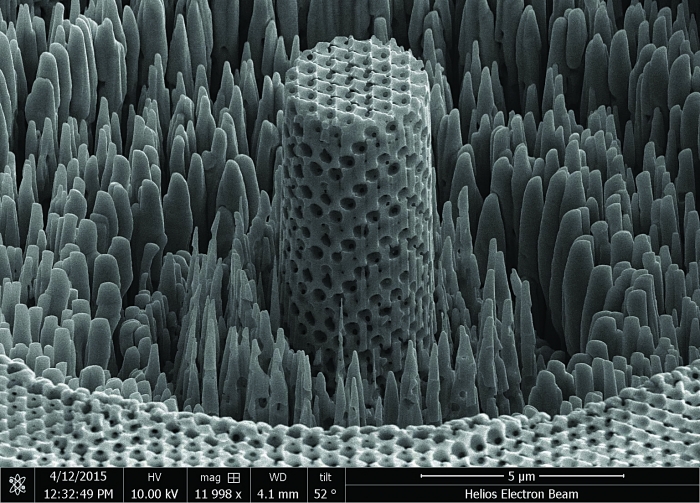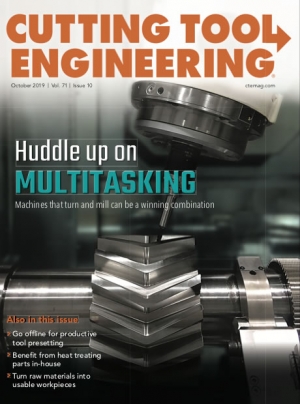So-called metallic wood with the strength of an alloy has potential uses in machining, as well as other applications, said James Pikul, whose research team recently published a study on the subject. The researchers built a sheet of nickel with nanoscale pores that make it as strong as titanium but four to five times lighter.
“It can be quite brittle, so on its own it might be difficult to shape,” said Pikul, assistant professor of mechanical engineering and applied mechanics at the University of Pennsylvania. “We are, however, looking at making composites from it that will increase its ductility, in which case it could prove to be a nice workpiece material as the composite should be more ductile.”
Sezer Özerinç of Middle East Technical University in Turkey; Paul V. Braun and William P. King of the University of Illinois at Urbana-Champaign; and Vikram S. Deshpande and Burigede Liu at the University of Cambridge in the U.K. were the main co-contributors to the study. They have researched metallic wood since 2012 but primarily used the material for battery applications.
Pikul said his initial work showed that if used as a current collector in batteries, the material could enable them to have 100 to 1,000 times the power of typical commercial batteries. After that research, he realized that the geometry and chemistry of the material might provide promising mechanical properties. The researchers started studying those properties in 2015, and the report about metallic wood was the result.

A microscopic sample of the metallic wood. Image courtesy of J. Pikul
“I imagine it can be used as the reinforcing material in a composite,” he said. “It is possible it could be used for machining as it is light and strong and hard, but I think it has more applications as a structural material where the weight matters more.”
The strength of metallic wood can be controlled between 100 MPa and 1,000 MPa, with density between 1,000 kg/m3 and 10,000 kg/m3. The specific strength is comparable to high-strength alloys, Pikul said. The empty space of the pores and the self-assembly process in which they’re created make the porous metal akin to a natural material, such as wood.
The material is a metal foam with very small struts on the order of 10nm to 100nm. The researchers believed that the tiny struts would possess enhanced mechanical properties due to an effect observed in nanopillars. The team was correct, and the strengthening of the metal that occurs when the struts are small is the principal reason the highly porous nickel is able to have such high strength.
The second thing that interested the researchers was the self-assembly fabrication. To make a material with tiny features requires precise engineering, but making a large material with nanometer-level features is really difficult because it requires control over billions of components per cubic centimeter of material, Pikul said. The only practical way to accomplish that is to do what nature does and guide the material to self-assemble, which is how metallic wood is made.
He said it could be available for use in five to 10 years.
“The challenge is there are not contract manufacturers for making nanomaterials,” Pikul said. “So there are additional technologies we need to invent to make a material like this commercially available.”
For more information about the department of mechanical engineering and applied mechanics at the University of Pennsylvania’s School of Engineering and Applied Science, call 215-746-1818 or visit www.me.upenn.edu.
Related Glossary Terms
- alloys
alloys
Substances having metallic properties and being composed of two or more chemical elements of which at least one is a metal.
- composites
composites
Materials composed of different elements, with one element normally embedded in another, held together by a compatible binder.
- ductility
ductility
Ability of a material to be bent, formed or stretched without rupturing. Measured by elongation or reduction of area in a tensile test or by other means.
- mechanical properties
mechanical properties
Properties of a material that reveal its elastic and inelastic behavior when force is applied, thereby indicating its suitability for mechanical applications; for example, modulus of elasticity, tensile strength, elongation, hardness and fatigue limit.


